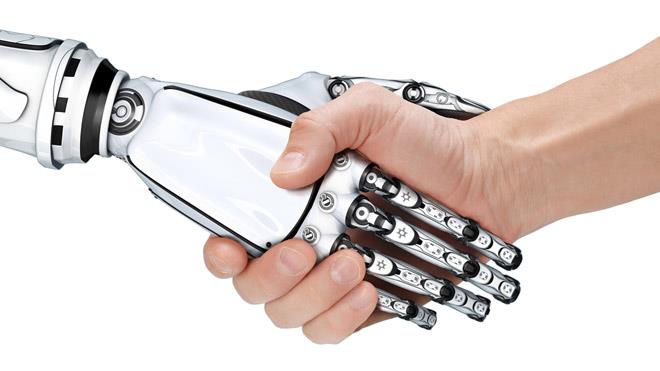Human Resource Management with Human- Robots Collaboration
Human Resource Management with Human- Robots Collaboration
One of the most important influencing factors in any industry is technology. Robots have been displacing employees in manufacturing since the 19th century. Workforce was displaced by machines in the third revolution, which began in the 1970s with the introduction of personal computers and the internet into the workplace. Digital technologies such as machine language and artificial intelligence are now being integrated into day-to-day workplace operations, resulting in corporate transformation. In HRM it is a new challenge to adapt to this cooperate transformation and need to update with new concepts such as Artificial intelligence.
Artificial intelligence is defined as,
“an ideal intelligent” machine that is flexible agent that perceives its environment and takes actions maximize its chance of success at some goal.” (Yawalkar, 2019).
Artificial intelligence, in contrast to natural intelligence displayed by humans, is intelligence demonstrated by machines. In 1956, academicians developed the term "artificial intelligence" for the first time. Artificial intelligence can assist in the automation of a variety of corporate processes, reducing the strain and work pressure on individuals at work. Rapid changes in the business environment necessitate quick responses. Traditional HRM responsibilities were challenged by automation, and a new age of HRM had to be implemented.
When statistics clearly demonstrate automation's potential, it's difficult to argue against it. The most recent proof comes from a Chinese factory in Dongguan City. The firm recently replaced 90 percent of its human workers with machines, resulting in a 250 percent boost in production and an 80 percent reduction in faults.as the cooperate transformation like this roles of the HRM criticized and forced to find new ways to face the consequences (Javelosa & Houser, 2022).
 |
| Figure 1:Rise of robots (BBC News Services, 2019) |
 |
| Figure 2:Conceptual Model (Militor, 2020) |
 |
| Figure 3:Integrated Framework (Libert, et al., 2020) |
References
BBC News Services,
2019. Robots 'to replace up to 20 million factory jobs' by 2030, s.l.:
s.n.
Javelosa &
Houser, 2022. World Economic Forum. [Online]
Available at: https://www.weforum.org/agenda/2017/02/after-replacing-90-of-employees-with-robots-this-companys-productivity-soared
[Accessed 11 April 2022].
Libert,
Cadieux & Mosconi, 2020. Human-Machine Interaction and Human Resource
Management Perspective for Collaborative Robotics Implementation and Adoption. s.l.,
Proceedings of the 53rd Hawaii International Conference on System Sciences, pp.
533-542.
Militor, 2020.
Effective Human-Robot Collaboration in the Industry 4.0 Context -
Implications for Human Resource Management. s.l.:Univercity of Twente.
Yawalkar,
2019. A Study of Artificial Intelligence and its role in. International
Journal of Research and Analytical Reviews (IJRAR, February, 6(1), pp.
20-24.




I agreed with you and I understood applying the power of automation could be the difference between individuals who develop in the profession and those who are marginalized and finally automated out of their HR roles.👍 good blog
ReplyDeleteThank You Lakshitha
DeleteTechnology cannot be avoided in the modern world for any organization. But using of both Human and robots in collaboration will be much effective. As you have explained role of HR has to have different approach for organization which using more technology. Good Luck.
ReplyDeleteThank You Venushka
DeleteHuman Resources is one of the most important aspects of any organization since it is closely linked to the lives of the individuals who work for it. HR's job is to ensure that every employee feels comfortable and receives the necessary assistance, as well as to provide them room to express their creativity, intelligence, and empathy in order to do exceptional work.
ReplyDeleteArtificial intelligence, which is currently one of the most advanced and rapidly developing technology, has greatly aided the HR department. The majority of low-value HR duties are automated and completed by AI, allowing greater attention to be focused on the strategic scope of work. Valuable topic to be discussed Asiri.
Thank You Wasantha
Delete